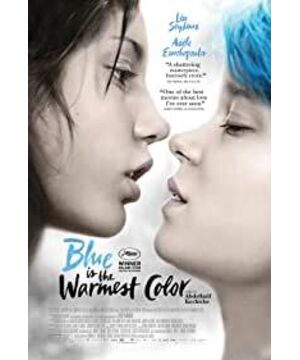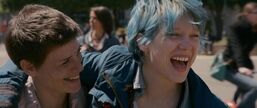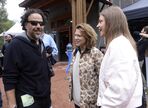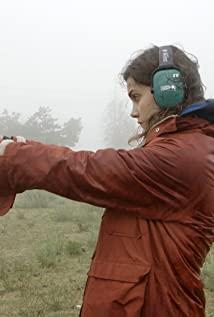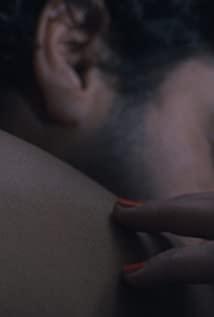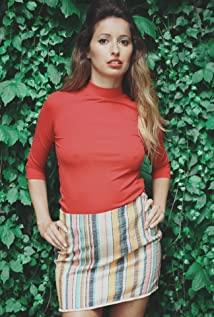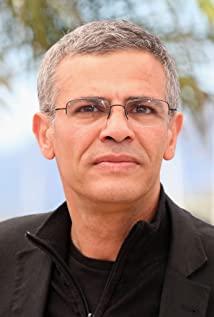It is easy to overlook that the front and back shots are a widely used film shooting technique. It is not so much a lens language as it is an editing language. This is actually very easy to understand: the front and back shooting is not a shot, but a group of shots. Its essence is montage, the rules of editing, not the "scene scheduling" dominated by the camera. The front and back shots that have not been edited and arranged are nothing more than two (or more) lens materials of different camera positions; the function of the front and back shots (groups) can only be determined after they are divided and placed in the editing sequence. Its aesthetics have just come into being. The aesthetics of pros and cons—yes, there is aesthetics in pros and cons, although it is often mistakenly regarded as an expedient measure of scheduling—it is the aesthetics of editing, the selection of editing points, and the timing of each shot in the montage Distribution, interweaving of power before and after the camera, etc.
On another level, pros and cons is a specific application example of editing "scheduling" (instead of camera scheduling) in commercial film production. The key to understanding the front and back is that it creates a third kind of "movement" through editing in addition to the movement of the elements in the frame and the movement of the camera body-the visual break at the moment of the editing point and the gap between the two consecutive images. Switch.
This third movement is the core of the front and back fight, and the primary purpose of the front and back fight as the language of the film. It connects the shots of different camera positions, and also connects different "line of sight" (inside reverse fight) or "angle of view". "(Outside the fight). These two types of pros and cons can be discussed separately, but their essence is exactly the same: the movement and change of the image space are completed on the premise of maintaining the uniform flow of image time. This is consistent with the appeal of "scene scheduling" in the general context, except that spatial movement is achieved through editing (fragmented switching of images) rather than camera movement (continuous transition of images). Since the "scheduling" is not completed when the shot is taken but after the editing, we can call it "out-of-lens scheduling"-this echoes the saying that long shots are "in-shot montage".
Naturally, we can also find the front and back counterparts in the general lens movement, such as panning or arc-shaped orbital lenses. And replacing the front and back shots (groups) with functionally equivalent or similar sports lenses has become an artistic technique to broaden the visual possibilities of images. A common technique is to insert a panning shot from one character to another in the editing sequence of the front and back of the two characters, or the orbital shot around the dining table in the "Hongmen Banquet" scene in "Let the Bullets Fly".
In special applications, this kind of replacement can become a stable and unique aesthetic system. For example, in Regadas's "Heaven and Earth", the vertical front and back of the characters are all replaced with a 180° slow pan; and For example, in a chapter of Godard's "Do As You Like", the heroine and the male photographer are talking in a bar, and the camera constantly wanders between the two cameras that look like a front and back shot, recreating the front and back intact. Hit the camera motion process omitted at the editing point.
But at the same time, the experiment done in the scene of "As You Like It" just proves the irreplaceability of pros and cons as the language of the film. When the movement process between the positions is repeated one-to-one, the vision of the movement itself will be emphasized. In "As You Like It", it is a systematic formal aesthetic, but in ordinary movies, it becomes an image. Redundancy. In contrast, when dealing with the same dialogue scene, the pros and cons should be much more concise and efficient. In fact, the advantage (or characteristic) of the motion created by editing is that it not only hides the process of motion, but also retains the result of the motion (switching of camera positions).
In fact, this is not only the case of front and back shooting, but also the editing pattern of front and back shooting in multiplayer scenes, and even the more generalized continuous editing. But compared to the continuous editing that serves narrative or shooting convenience, the front and back shooting is "unnecessary" editing (a two-person mid-shot can certainly meet the narrative needs more easily), and the motivation it generates is more derived from the right The image's ideology and the pursuit of visual mobilization, therefore, it can also more purely reflect the aesthetic characteristics of this special movement.
In all the creative practice of pros and cons, there seems to be an underlying law: mediocre works only focus on the audiovisual content of dialogue scenes (and worse, there is no "audiovisual", only performance and dialogue), pros and cons Shooting and editing are just stylized tools for them; while outstanding creators like to explore the aesthetic potential of pros and cons themselves, in their works, this form of film language is usually highlighted. The shots in which characters such as Ozu speak facing the camera are the most in-depth use of the essence of pros and cons. In addition, Bergman's "Mask" may be one of the earliest editing templates for the relationship between sound and picture. In the continuous soundtrack of the character's dialogue, the editing points of the reaction shots of the anti-shooting are precisely inserted to capture the emotional expression of the character's moment. The front and back shots of Bibby Andersson reading the letter to Liv Uman are exactly the "eyes" of "Mask", which was repeated twice in different editing methods during the climax of the film. .
After the new millennium, with the continuous advancement of film technology, the use of pros and cons has become more and more extensive, becoming "omnipotent": in the famous murderer interrogation scene of "Zodiac", Vinci and his editing The teacher used different scenes of fast forward and backward fights, creating a line of doubt, excitement and fear; Kurosawa Kiyoshi’s "A Journey to the Shore" exposed the inhumanity of the actor’s face with a positive and negative fight. Jing Yu’s pale face constantly clashed in the vertical front and back, opening a deep entrance to the nether; in Scorsese's several gangster films, the rich dramatic potential of the third "sport" edited was used. To the extreme, the simple pros and cons between the dialogues hinted at the undercurrent surging under the surface plot.
"The Life of Adele" is also a movie that uses pros and cons a lot. But the difference is that the front and back shots in the above examples are basically fixed shots or stable motion shots, while the whole film of "Adele's Life" uses handheld photography. Although handheld photography is generally a realistic photography style that emphasizes "documentary", the application of "Adele's Life" to handheld photography has a shorter average lens length, and almost all scenes are close-up or close-ups. . Short shots chopped up our continuous perception of time, small scenes and camera shake isolated our overall perception of space, and lost the clarity of time and space, and the image naturally deviated from realism.
At the same time, the small scene further strengthens the frequency and complexity of the camera's movement, which not only gives it a sensory stimulation and emotional impact far beyond other photography methods, but also fundamentally "de-arranges" the image. , Becomes full of random and impromptu energy. The traditional "scene scheduling" first needs to operate on clear time and space, and second, it requires manual arrangement of the "scene", which cannot exist in "Adele's Life".
At this time, it is editing that restores order to the chaotic image system. In the editing process, time is sorted and spliced, and space is established and portrayed. At this time, the camera is only responsible for the production of the lens as the unit and material, and then all are handed over to the editing to complete the "out-of-lens scheduling". In the end, what we see is a complete space-time, but the difference is that it does not exist alone in any image fragment (shot), but only in the montage itself; in other words, the price of its formation is crushing. And reorganize the time and space of each partial shot. There are many movies that use similar ways of generating time and space, such as those filmed by Catherine Bigelow.
For lenses with longer and larger scenes, time and space have been automatically formed internally since they were born. Unless special techniques such as slow motion or skip cut are used, they will exist as unchangeable inherent properties in the lens. middle. The positive and negative impact of such a lens and the film it composes is different from the meaning of "Adele's Life".
As mentioned above, the essence of positive and negative fighting is rooted in editing, which is a kind of editing-level creation, so in "Adele's Life", it must also abide by the overall logic of editing-the order of time and space. Reinvent. The beauty of the front and back fights in general movies is that it creates a kind of spatial rupture and traversal in the uniform flow of time, a kind of implicit and concise movement; while "Adele's Life" is just the opposite. , It is to recreate a uniform flow of time by stitching the broken space. The former creates (spatial) movement through forwards and reverses, while the latter creates time.
This is why in other movies, the front and back shots have a strong ideographic function. What we see is the collision, contrast, tension and chemical reaction between the front and back shots before and after the editing point. They convey a double mid-range shot. A message that cannot be conveyed; but in "Adele's Life", the strong presence of the recreated time stream completely obscures the editing point, and we hardly notice the existence of pros and cons. Perhaps we should indeed be grateful to Adèle Exarchopoulos and Léa Seydoux for their performances that make everything a matter of course, and all the editing has to do is to connect (that is, to create time).
Therefore, what appears in "Adele's Life" is exactly the phenomenon that contradicts the "potential law" of the creation of pros and cons mentioned above: the movie language of pros and cons no longer possesses aesthetics, and has full energy. They all flow back into the audiovisual content of the dialogue scene—to be precise, the speech and behavior of the two actors and the two characters. But you can't say that this is a mediocre creative method; on the contrary, it is an evolution of returning to the basics.
Let us look at a concrete example. In about an hour, the movie progressed to a scene where Adèle and Emma were dating for the first time in the park. We first saw a vision as a set-up lens. The two were sitting on a bench, and Emma drew a sketch for Adèle. This shot initially reveals time and space. Next, the image entered the mode we discussed earlier-small scenes, short shots, hand-held photography, time and space became chaotic, and editing began to play its role in reorganization and reconstruction.
In the montage composed of Adèle's over-the-shoulder close-up, Emma's over-the-shoulder close-up, and (the two shots are reframed in hand-held photography) single-person close-ups, and close-ups drawn by Emma, we You can see the sweet and interesting dialogue and eye contact between the two, but these interactions and the emotions that are generated are directly expressed by the performance, rather than being drawn and transmitted by the pros and cons. The third "movement" of the editing point has disappeared, or at least no longer has the meaning. The pros and cons are completely driven by the characters and the dialogue. It is not the will of a "scheduler", but a stream of faces and movements. .
Therefore, as mentioned earlier, the meaning of pros and cons here is just "creating time." This may seem simple, but in fact it is of great significance: a sincere movie must first be a movie with timeliness-time and space are the necessary prerequisites for the situation to occur, and with the situation, the behavior of the characters appears real. And spontaneity, otherwise, no matter how superb the performance is, the existence of "screenwriter" will be exposed like genre films and bad author movies. If you take an example in a romance film, then "Love Before Dawn" is the original time of the long shot, and "The Life of Adele" is the re-creation time of the montage. The timeliness of the scene draws the audience into the situation and appreciates love at close range. .
But don't forget that the front and back is not only a visual language, but also an auditory language. It is the continuity of sound that ensures that the switching of the screen does not cause the image to be broken. In this scene, behind the benches Adèle and Emma sit on is a river, what a clever setting! The murmur of river water, the sound of birds, and the sound of wind and trees are natural sound fields. They firmly subconsciously output the audience's "continuous" auditory perception, laying a solid foundation for the reconstruction of time.
Like the third type of "movement" created by editing points, the "time" of montage reconstruction is a great illusion that only exists in the art of film. From the repetitive motion editing in the silent film era, to the subsequent continuous editing system, and then to the cross-camera sound system, the advancement of film technology has not only brought more and more rich audiovisual, but also more and more fake time. Sex, movies have also evolved from "moving images" that provide sensory entertainment to a kind of time magic.
View more about Blue Is the Warmest Colour reviews


